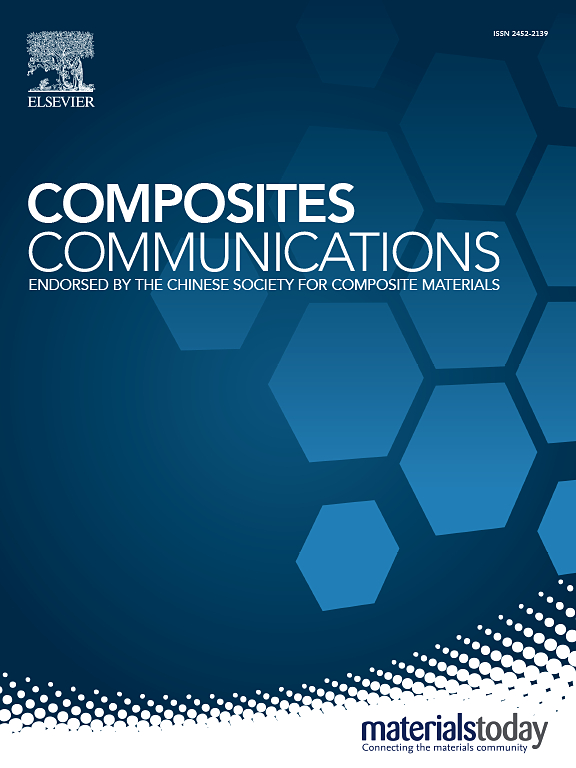Dramatic mechanical increments of basalt fiber/phthalonitrile (BF/PN) composites by constructing a unique micro/nano hybrid interface
IF 6.5
2区 材料科学
Q1 MATERIALS SCIENCE, COMPOSITES
引用次数: 0
Abstract
The weak interfacial interaction in basalt fiber reinforced polymer (BFRP) composite generally produces stress concentration failures. This study presents a method to enhance the interface properties in BF/PN composites by constructing a unique micro/nano hybrid interface onto BFs through the in situ complexation reaction and the subsequent introduction of CNTs. The muti-scale FePc/CNTs hybrid interface significantly improved the surface roughness/wettability of BFs and the mechanical properties of final BF/PN composites. A high flexural strength of 1098.8 MPa and a maximum ILSS of 62.8 MPa are observed in p-CNT3-BF/PN composites, increased by 64.8 % and 93.2 % compared with that of original BF/PN composite. The organic polar groups in FePc/CNTs hybrid improve interfacial compatibility and bonding of BFs with matrix, resulting in multi-scale interfacial interactions and stress transfer in BF/PN composites. This research will contribute to the construction of micro/nano hybrid interfaces onto fiber surface and offers valuable insights for the developments and applications of FRPs.
求助全文
约1分钟内获得全文
求助全文
来源期刊

Composites Communications
Materials Science-Ceramics and Composites
CiteScore
12.10
自引率
10.00%
发文量
340
审稿时长
36 days
期刊介绍:
Composites Communications (Compos. Commun.) is a peer-reviewed journal publishing short communications and letters on the latest advances in composites science and technology. With a rapid review and publication process, its goal is to disseminate new knowledge promptly within the composites community. The journal welcomes manuscripts presenting creative concepts and new findings in design, state-of-the-art approaches in processing, synthesis, characterization, and mechanics modeling. In addition to traditional fiber-/particulate-reinforced engineering composites, it encourages submissions on composites with exceptional physical, mechanical, and fracture properties, as well as those with unique functions and significant application potential. This includes biomimetic and bio-inspired composites for biomedical applications, functional nano-composites for thermal management and energy applications, and composites designed for extreme service environments.
 求助内容:
求助内容: 应助结果提醒方式:
应助结果提醒方式:


